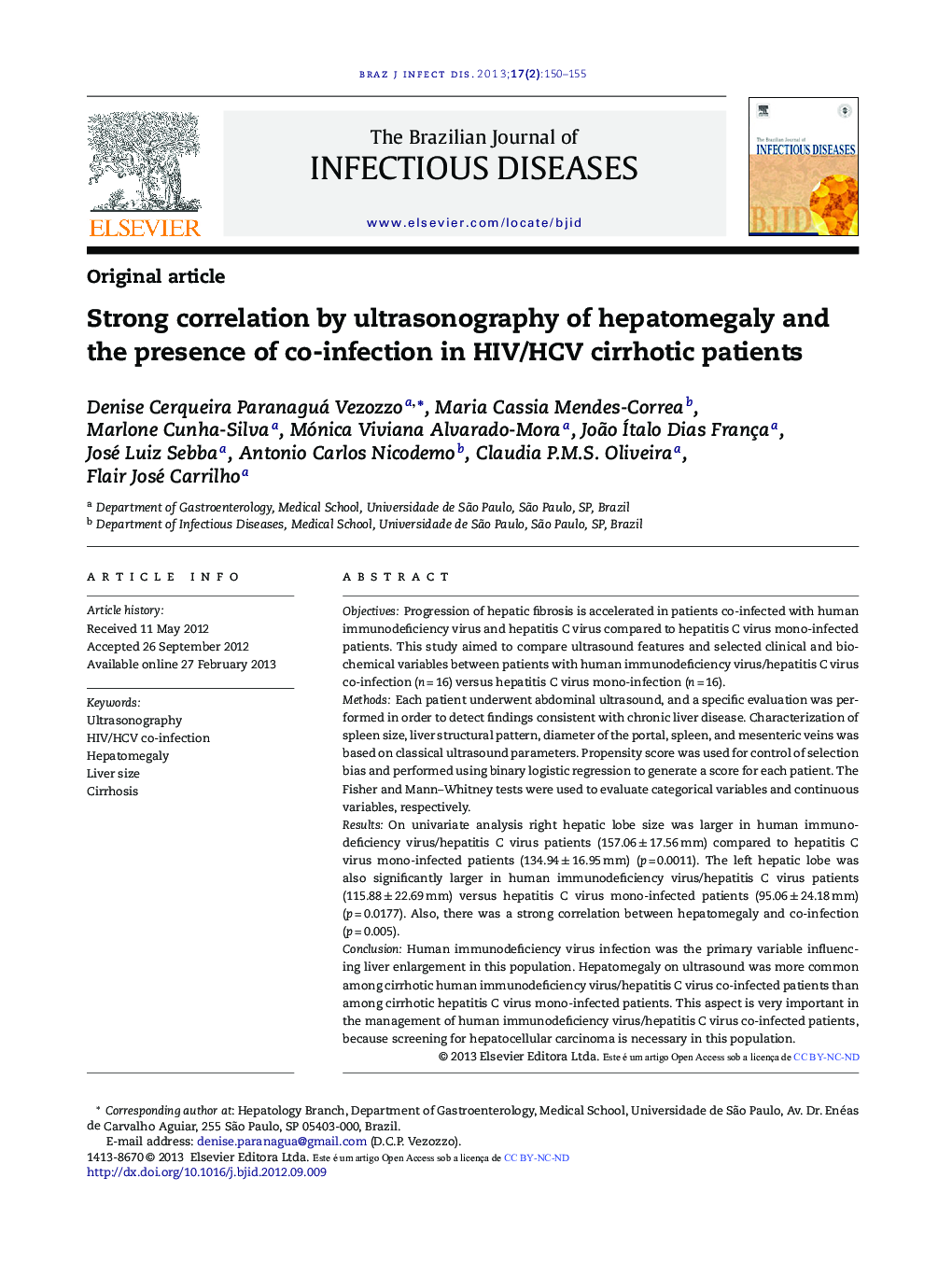| Article ID | Journal | Published Year | Pages | File Type |
|---|---|---|---|---|
| 3344068 | The Brazilian Journal of Infectious Diseases | 2013 | 6 Pages |
ObjectivesProgression of hepatic fibrosis is accelerated in patients co-infected with human immunodeficiency virus and hepatitis C virus compared to hepatitis C virus mono-infected patients. This study aimed to compare ultrasound features and selected clinical and biochemical variables between patients with human immunodeficiency virus/hepatitis C virus co-infection (n = 16) versus hepatitis C virus mono-infection (n = 16).MethodsEach patient underwent abdominal ultrasound, and a specific evaluation was performed in order to detect findings consistent with chronic liver disease. Characterization of spleen size, liver structural pattern, diameter of the portal, spleen, and mesenteric veins was based on classical ultrasound parameters. Propensity score was used for control of selection bias and performed using binary logistic regression to generate a score for each patient. The Fisher and Mann–Whitney tests were used to evaluate categorical variables and continuous variables, respectively.ResultsOn univariate analysis right hepatic lobe size was larger in human immunodeficiency virus/hepatitis C virus patients (157.06 ± 17.56 mm) compared to hepatitis C virus mono-infected patients (134.94 ± 16.95 mm) (p = 0.0011). The left hepatic lobe was also significantly larger in human immunodeficiency virus/hepatitis C virus patients (115.88 ± 22.69 mm) versus hepatitis C virus mono-infected patients (95.06 ± 24.18 mm) (p = 0.0177). Also, there was a strong correlation between hepatomegaly and co-infection (p = 0.005).ConclusionHuman immunodeficiency virus infection was the primary variable influencing liver enlargement in this population. Hepatomegaly on ultrasound was more common among cirrhotic human immunodeficiency virus/hepatitis C virus co-infected patients than among cirrhotic hepatitis C virus mono-infected patients. This aspect is very important in the management of human immunodeficiency virus/hepatitis C virus co-infected patients, because screening for hepatocellular carcinoma is necessary in this population.
